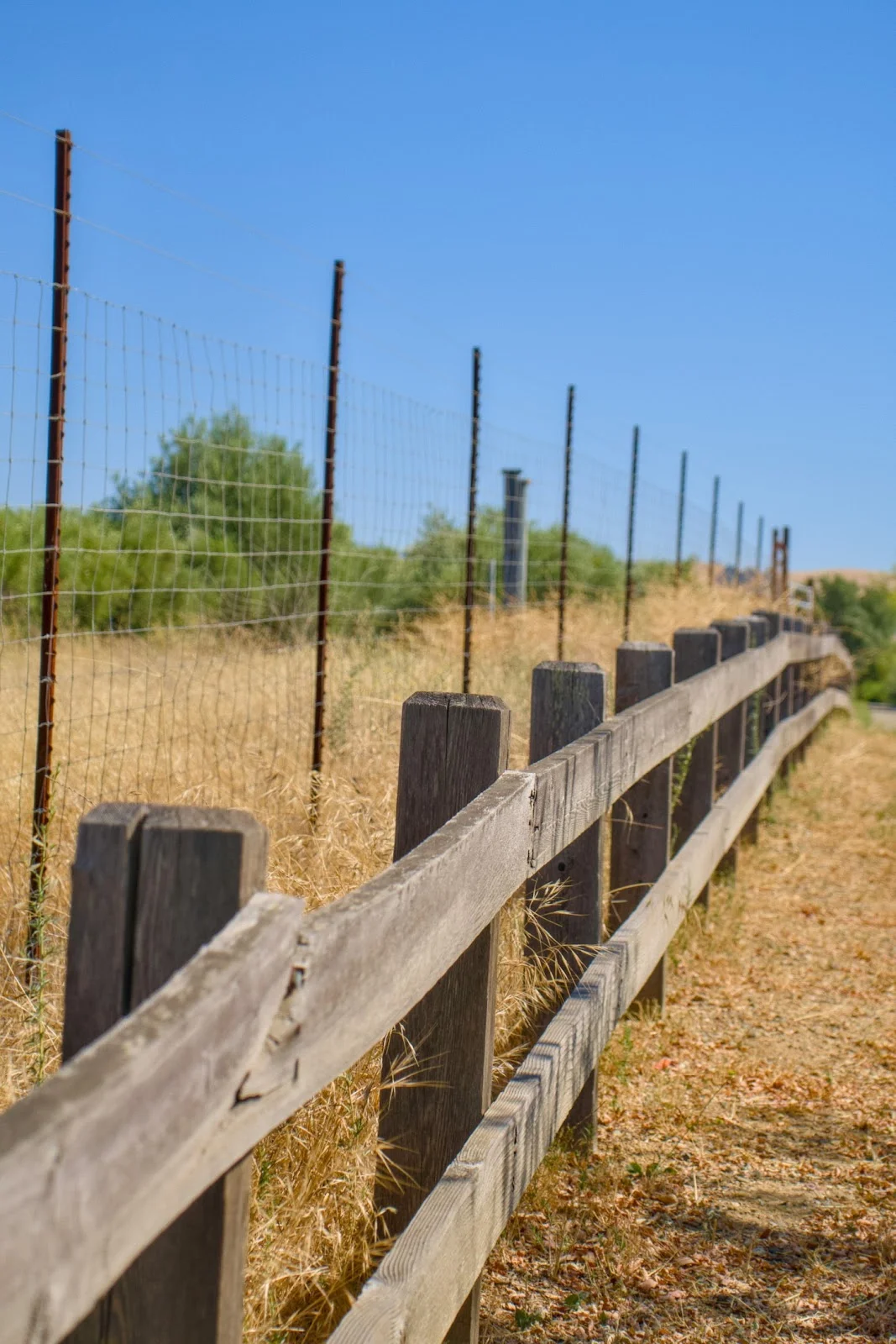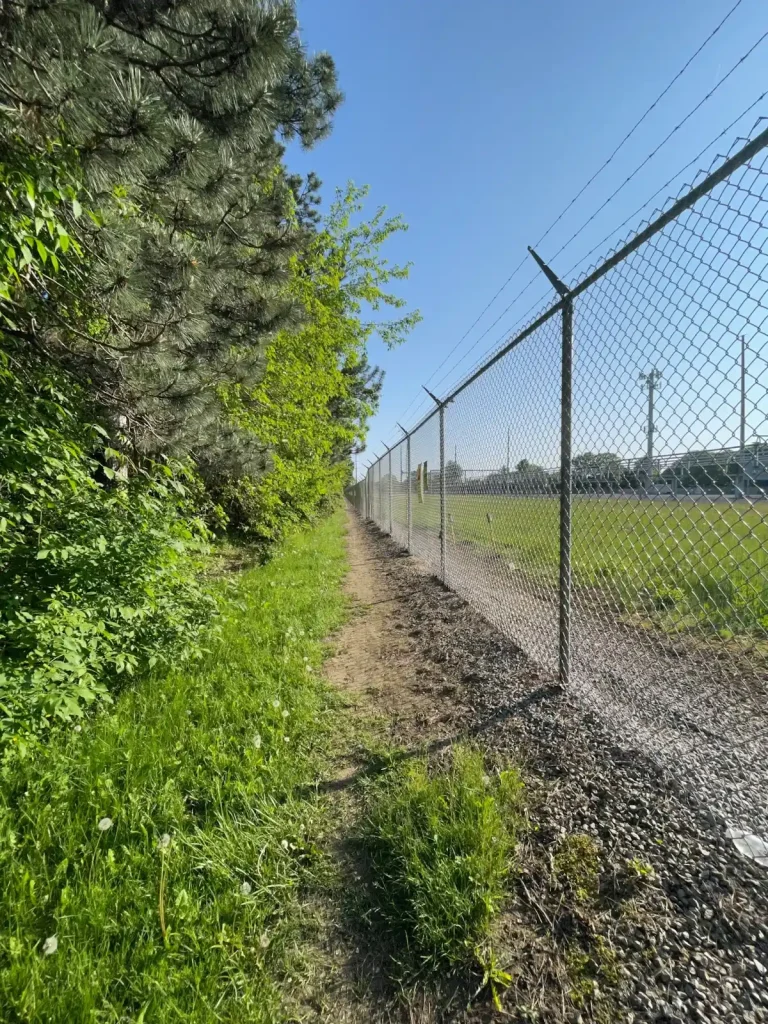
6 Best Park Fencing Design Ideas
by Harvey Croft18th June 25
Fencing plays a vital role in shaping the functionality and feel of public parks, country estates, nature reserves, and large recreational spaces. Unlike garden fencing for homeowners, park fencing solutions for large sites must balance safety, aesthetics, wildlife control, and long-term durability.
Whether you manage a historic estate, a sprawling country park, or a public green space with high footfall, the right fencing design helps create a secure and inviting environment. From traditional flat bar railings to high-security welded mesh fencing, this article explores the best park fencing ideas to suit a variety of site needs, terrains, and access requirements.
Key Considerations When Choosing Park Fencing Designs
Selecting the right park fencing is a critical decision for organisations responsible for large-scale outdoor spaces. Whether managing a historic estate, a public country park, or a conservation site, the fencing design must strike a balance between practical functionality, aesthetics, safety, and long-term durability. Here are the key factors to keep in mind when planning your park fencing project.
Define the Purpose of Your Fencing
Before selecting a style or material, it’s essential to define exactly what your fencing needs to achieve. Do you need a wildlife fencing design to prevent the movement of wildlife such as deer, foxes, or badgers? Perhaps pedestrian safety is your main concern in a busy public park frequented by children and dog walkers. Or maybe you need a secure perimeter around service infrastructure, a sports facility, or a maintenance compound within a larger estate.
Understanding the primary function of your park fencing whether it’s containment, access control, aesthetics, or all three will inform every other decision in the planning process.
Assess Ground Conditions and Terrain
Not all ground is equal, especially when dealing with undulating land or sloped landscapes typical of country parks and heritage estates. Fencing installations must be able to follow the contours of the land without compromising on strength or stability.
Certain designs, like continuous estate fencing, lend themselves well to uneven or rolling terrain, while others may require specific post foundations, such as concrete settings, to remain secure. Soil type, drainage, and any existing hard surfaces (such as pathways or concrete pads) will influence the ideal installation method and materials used.
Consider Perimeter Length and Access Requirements
Large-scale parks and estates often require extensive fencing runs, sometimes spanning hundreds of metres. It’s vital to plan your fencing layout in relation to the total perimeter, identifying natural access points for vehicles, pedestrians, and maintenance teams.
Gate integration should be seamless and secure, with the ability to match fencing designs or include automation if required. Modular fencing systems or those that are easy to extend, by adding a ‘next panel’, can offer real flexibility for evolving spaces or phased development plans.
Ensure Compliance with Legal and Planning Requirements
In public-facing environments such as local authority parks, country parks, and sites of historical significance, fencing must comply with a variety of regulations. These may include planning permissions, listed property restrictions, or local council safety requirements.
For example, fencing around children’s play areas or near public pathways may need to meet certain visibility, height, or spacing standards. It’s important to engage early with local authorities or a professional fencing contractor who understands compliance within the UK regulatory landscape.
Choose Materials That Offer Long-Term Durability
Given the British climate, with its wet winters and fluctuating temperatures, materials must be chosen for longevity. Steel, especially when galvanised or powder-coated, offers strength and resistance to corrosion. Bare metal and traditional flat bar options suit heritage settings, while pressure-treated timber is often preferred for its natural look and eco-friendly credentials.
For high-security fencing, reinforced metal mesh and concrete post systems provide robust protection. The right choice of materials not only ensures your fencing looks appropriate for the site, but also reduces ongoing maintenance costs and enhances lifespan.

6 Park Fencing Design Ideas
Design Idea 1: Traditional Continuous Estate Fencing
A timeless and elegant choice, continuous estate fencing uses flat bar steel rails with rounded or pointed verticals to create unobtrusive boundaries. Popular on deer parks, country parks, and heritage estates, this fencing design suits sloping land beautifully, effortlessly following the contours of undulating ground.
Key features:
- Decorative options such as caps, scrolls, or branded panels.
- Often finished in bare metal or painted in traditional colours.
- Strong yet visually light – ideal for blending with rural or parkland settings.
- Simple to combine with gates for pedestrian or vehicle access.
- A great solution where aesthetics and animal containment must co-exist.
Design Idea 2: Welded Mesh Fencing for Wildlife and Security
For areas requiring a higher level of containment, welded mesh fencing offers strength and visibility. Common in wildlife parks, nature reserves, and public green spaces, this fencing is especially effective at controlling animal movement.
Highlights include:
- Suitable for fox, badger, beaver, and deer fencing to protect and preserve land.
- Can be used with timber or concrete posts.
- Maintains line-of-sight while creating a secure perimeter.
- Durable coatings for minimal maintenance.
- Frequently used in parks needing safety for both flora and fauna.

Design Idea 3: Decorative Estate Railings With Modern Gates
Blending classic style with modern utility, decorative estate railings paired with custom gates add prestige and structure to key entry points.
Perfect for clubs, historic homes, and visitor attractions, these railings elevate the landscape while supporting functional access.
Design features:
- Incorporate finials, decorative caps, or scrollwork.
- Gates can be manual or automated, with optional keypad or door access.
- Finishes include powder-coated, galvanised, or custom painting.
- Helps create a seamless entry experience for cars and pedestrians.
Design Idea 4: Timber Post and Rail Fencing for Natural Landscapes
For sites that require a softer, natural aesthetic, timber post and rail fencing is an excellent choice. Often used in rural parks, nature reserves, and country estates, this fencing suits informal perimeters and pathway definitions.
Advantages:
- Built from UK-grown pressure-treated timber – long-lasting and eco-conscious.
- Blends seamlessly with natural landscapes.
- Optional stock wire can enhance animal containment.
- Easy to install and repair with modular designs for smooth next panel alignment.
Design Idea 5: High-Security Fencing for Restricted Areas
Infrastructure zones within parks – like equipment shelters, utilities, and maintenance yards – demand robust security. Steel palisade fencing and v-mesh panels with anti-climb features for animals that climb fences, offer peace of mind.
Key benefits:
- Reinforced with concrete post systems.
- Restricts access with integrated padlocked gates or keypad entry.
- Ideal for behind-the-scenes areas on estates and sports grounds.
- Built to withstand weather, vandalism, and wear over time.
Design Idea 6: Modular Panel Systems for Flexible Installations
Sites that are developing in stages or undergoing seasonal changes may benefit from modular panel fencing systems. These systems are pre-fabricated for fast deployment and are easily adapted or moved.
Benefits of this system:
- Excellent for temporary parks or evolving site planning.
- Range of finishes available – from timber-look to powder-coated steel.
- Cost-effective for large perimeters.
- Compatible with access gates and different terrain types.
Benefits of Professional Park Fencing Installation
While product choice is important, professional installation is critical for long-term success. Working with experienced fencing contractors ensures:
- Accurate planning and measurement of perimeter and access points.
- Expertise in working across undulating ground, concrete bases, and mixed terrain.
- Fully integrated systems including fencing, gates, railings, and wildlife solutions.
- Reliable service from supply to installation.
County Fencing provides tailored fencing solutions across the UK, combining heritage craftsmanship with modern durability. Whether you’re securing a nature reserve, refreshing a historic estate, or rethinking your park’s layout, our team can help you design and install a system that fits your needs.
Closing Thoughts
From ornate estate fencing to secure welded mesh panels, choosing the right design means understanding your site’s specific needs – from safety and access to terrain and aesthetics. With the right approach, your fencing can enhance usability, ensure safety, and reflect your park or estate’s character.
In the UK, County Fencing is a prominent supplier of specialised fencing, fencing equipment, and fencing installation services. We will be pleased to offer advice on any fencing needs you may have, with an emphasis on specialised applications and the best fencing equipment available.
We can advise on the application of deer fencing, fox fencing, badger fencing and more.
Need help finding the right fencing? Contact us today for a free quote or use our perimeter calculator to estimate your needs!
FAQs
What’s the best fencing for deer parks?
Continuous estate fencing is commonly used in deer parks due to its ability to follow undulating ground and its balance of strength and elegance. For more secure containment, welded mesh fencing may also be suitable.
Can fencing be installed on uneven terrain?
Yes, many fencing systems – especially estate railings and modular panels – are designed to adapt to slopes and irregular surfaces. Professional installers will assess the ground conditions and adjust post placements accordingly.
Do I need planning permission for park fencing?
In some cases, yes. Particularly for public parks, historic estates, or fencing over a certain height, you may need planning approval. It’s advisable to consult local authorities or seek guidance from fencing professionals like County Fencing during the site planning phase.

